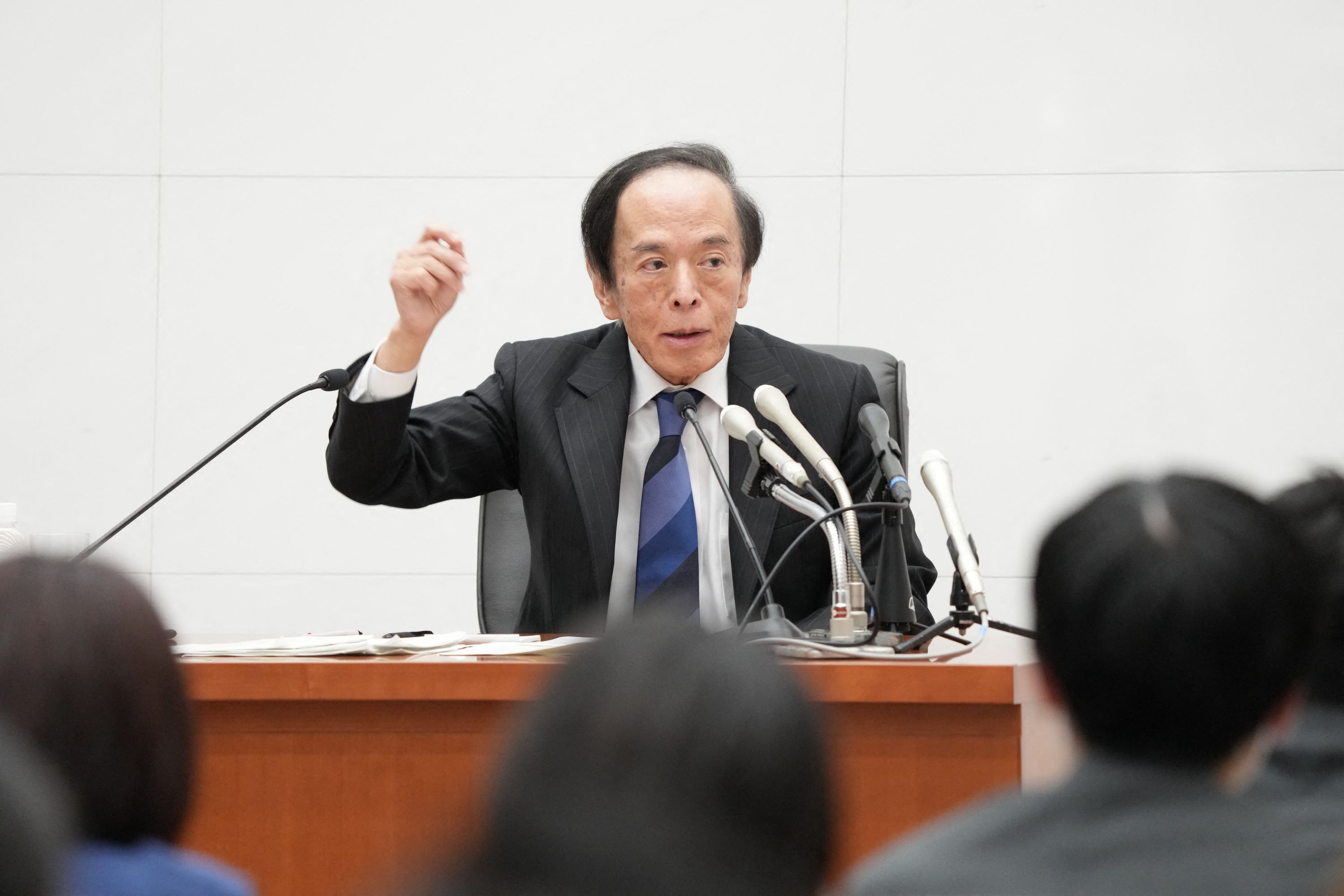
TOKYO - Bank of Japan Governor Kazuo Ueda said on Tuesday the central bank will raise interest rates once it is convinced enough that economic and price growth will reaccelerate after a period of stagnation.
Ueda also signaled the central bank will continue to taper its huge bond buying even after an existing plan running through March expires, underscoring its resolve to stay on course for a slow but steady withdrawal of ultra-easy policy.
The hit from higher US tariffs on Japan's economy could first come from a drop in exports, which could hurt corporate profits and consumer sentiment, Ueda said.
"US tariffs could weigh somewhat on Japanese companies' winter bonus payments and next year's wage talks with unions," Ueda told parliament.
"Wage growth may slow somewhat. But we expect economic and wage growth to reaccelerate" and keep consumption on a moderate uptrend, he added.
ALSO READ: BOJ warns of possible hit to global trade from planned new US tariffs
The BOJ ended a massive stimulus last year and in January raised short-term interest rates to 0.5 percent on the view that Japan was on the cusp of durably hitting its 2 percent inflation target.
While the central bank has signalled a readiness to raise rates further, the economic repercussions from higher US tariffs forced it to cut its growth forecasts in May.
Stubbornly high food prices, blamed largely on rising import costs and soaring rice prices, have also complicated the BOJ's rate decisions by simultaneously hurting consumption and keeping headline inflation well above its target.
The BOJ is keeping interest rates low even as headline inflation hit 4.6 percent in April – well above its 2 percent target – as it expects the rise in food prices to slow, Ueda said.
Underlying inflation – or price rises driven by domestic demand and higher wages – remains short of 2 percent, but will likely reaccelerate after a period of stagnation, Ueda said.
ALSO READ: Tariff crossfire hits Toyota, Nissan, Ford suppliers in Japan
"If we're convinced our forecast will materialize, we will adjust the degree of monetary support by raising interest rates," Ueda said, noting that uncertainty over the outlook was "extremely high".
A Reuters poll, taken on May 7-13, showed most economists expect the BOJ to hold rates steady through September with a small majority forecasting a hike by year-end.
At its next policy meeting on June 16-17, the BOJ will conduct a review of its existing bond-taper plan and lay out a new program for April 2026 onward.

The plan is drawing market attention as concern over Japan's worsening finances and dwindling demand from domestic investors caused a spike in super-long government bond yields last month.
The BOJ held meetings with bond market participants on May 20-21 to seek their views on the desirable taper plan, which will be taken into account at the June rate review.
READ MORE: Japan's exports slow, shipments to US fall as tariffs bite
"At the meeting, calls for the BOJ to make amendments to the existing plan were limited," Ueda said, suggesting the review will lead to no major tweak to the existing taper program.
"As for our plan beyond April 2026, many opinions called on the need for the BOJ to continue tapering, while balancing the need to do so flexibility and predictably," he said.
Minutes of the meeting, released on Monday, showed the BOJ received a sizeable number of requests to maintain or slightly slow the pace of tapering from fiscal year 2026 onward.
While the participants diverged on how much the BOJ should taper beyond April 2026, several called for reducing its monthly purchases to around 1 trillion yen to 2 trillion yen ($7 billion-$14 billion) by the end of the new taper program, the minutes showed.


